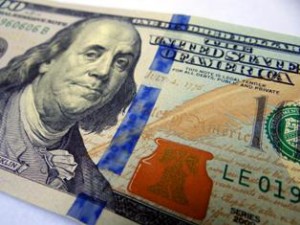This is the second in a three part series on how Ben Franklin’s startup story teaches us that the methods by which startups are conceived, grown, and evolved are timeless.
In Part I of young Ben’s startup story, in 1724, he had been burned after traveling to England to buy equipment. He remained there for two years and had learned about modern printing concepts and how to properly manage a shop. Ben moved back to the U.S., working for Samuel Keimer at the print shop where he had first apprenticed, essentially starting all over again. Franklin applied there what he’d learned in England to become innovative—he was the first to manufacture type in America and the first to generate a new font still used in many newspapers today, Franklin Gothic. “I made the ink; I was warehouseman, and everything, and, in short, quite a factotum,” or handyman, Franklin writes.[i]
But Ben was miserable working for Keimer, partly because of the printer’s authoritative attitude and lack of work ethic.
Ben had an independent, rebellious streak, so he struck out on his own again, this time with co-worker Hugh Meredith, whose father agreed to invest 200 pounds ($313,101 in today’s dollars)[ii] in Ben’s print shop. Franklin sailed again to England and purchased equipment and fonts with a “generous array of … page decorations, marked features of his typography through his printing career”[iii] that would later help him differentiate himself from Keimer and another pair of Philadelphia printers, Thomas and William Bradford.
In 1728, when Franklin and his partner started their business, Meredith & Franklin, they knew they had to adhere to a bootstrap mentality—keeping costs low by living in their print shop and taking a sub-lessee which helped pay his rent that in today’s dollars was $37,000 per year. Doubters expressed concern that a new printing company would survive, but Franklin and Meredith finally acquired their first customer, who paid them five shillings ($395 in today’s dollars[iv]). Even though the job was small, the first sale gave Franklin “more pleasure than any crown I have since earned,” a crown being the equivalent of 21 shillings.[v]
Franklin took advantage of his personal strengths and inventive nature to get his print shop off the ground. For example, one of Ben’s strengths was networking, so he created a club for mutual improvement, “Junto,” that catered to the city’s movers and shakers. The group met on Friday evenings to discuss morals, politics, philosophy, and business. Junto also helped Franklin find customers for his new business.
Despite some small early successes, Franklin’s business faced setbacks. Meredith’s father had promised to provide 200 pounds in capital, but only delivered the first 100 pounds, leaving Franklin 100 pounds in debt. “The merchant, who grew impatient, .. su’d us all. We gave bail, but saw that, if the money could not be rais’d in time, the suit must soon come to a judgment and execution, and our hopeful prospects must, with us, be ruined, as the press and letters must be sold for payment, perhaps at half price.”[vi]
To make matters worse, Meredith wasn’t holding his own in the partnership. He didn’t enjoy print work and was spending most of his time drinking in pubs. So in 1729, Franklin and Meredith decided to part ways—leaving Franklin to endure greater financial debt in order to buy out the Merediths’ interest in the business.
Franklin was forced to work alone tirelessly to pay off the debt. “…To show that I was not above my business, I sometimes brought home the paper I purchas’d at the stores thro’ the streets on a wheel-barrow,”[vii] noted Ben.
Franklin gradually earned enough revenue to make his loan payments. Here’s how: he adopted vertically integrated processes to reduce costs and increase revenue. Franklin manufactured his own ink, a skill he had learned in England, and sold it to other print shops, diversifying his revenue sources. And to gain more customers and use of his presses, in 1729, Franklin purchased an ailing newspaper, the Pennsylvania Gazette, and also opened a store that sold stationery and books.
Like entrepreneurs today, during his time of trying diverse innovative ideas to survive, Franklin’s new wife, Deborah, helped his business. “She assisted me cheerfully in my business, folding and stitching Pamphlets, tending shop…”[viii]
Learning from Ben’s Blade Years
After five years of trying, Ben was still struggling with his startup. Let’s dive into the timeless lessons from this stage:
- His Blade Year struggles are par for the course: Ben’s startup reminds me of many of the startups I invest in today. During the first few years when revenue is low and growth is non-existent, founders have their backs against the wall and must be scrappy, penny-pinching, and do whatever it takes to survive, often bootstrapping, just as Ben did. He made his own ink and did much of the work himself. Remember, even today, bootstrapping should be standard operating procedure for startup entrepreneurs.
- Partnerships don’t always work out: As much as we try to make cofounder arrangements work well, sometimes they do not. Don’t get down and blame yourself when partnerships fail, as was the case with Ben’s partnership with Meredith. Instead, press on with your idea and recognize it as a bump in the road, not a failure of the company. Remember, a business with momentum is much bigger than any one individual.
But Ben is just getting started; be sure to check out next week’s post as he presses ahead and his revenue begins to turn northward.
[i] (Franklin 1996) p26
[ii] Currency Conversion
[iii] (Miller 1974)
[iv] Currency Conversion
[v] (Franklin 1996) p.28
[vi] (Franklin 1996) p.31
[vii] (Franklin 1996) p.33
[viii] (Franklin 1996) p.37
Sign up to get more great insights directly to your inbox.
As a special bonus, you'll also immediately get access to my inside analysis of what made 172 diverse companies achieve take-off revenue growth.


